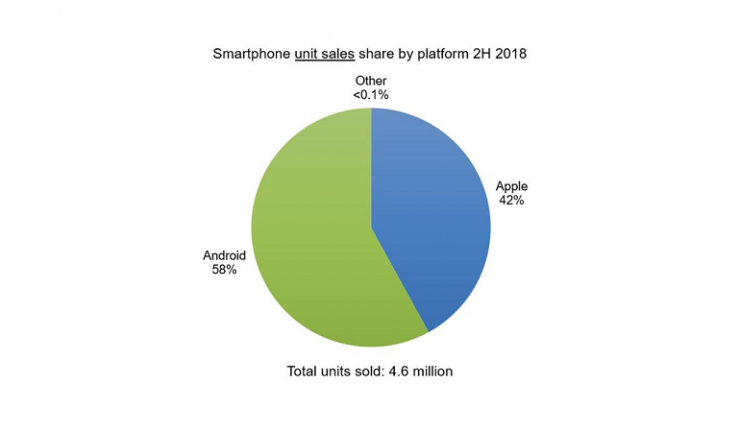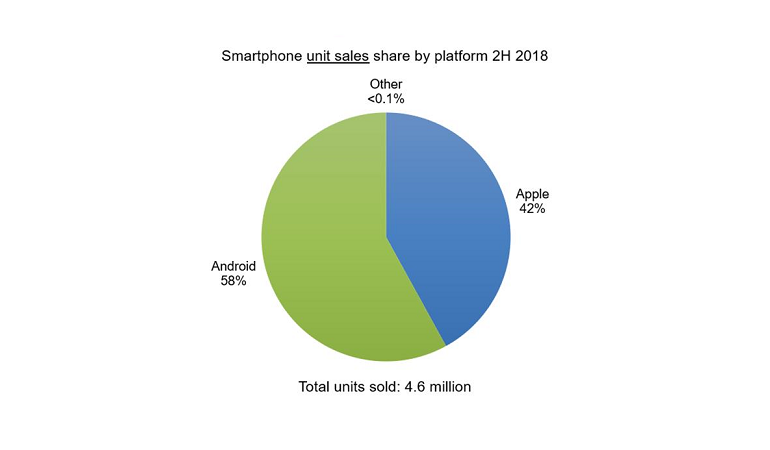Smartphones costs start to bite.
The high cost of new smartphones is holding back market growth in Australia with Apple losing share to Android rivals, according to new research from Australian emerging technology analyst firm, Telsyte.
The Telsyte Australian Smartphone & Wearable Devices Market Study 2019 found the timing and availability of 5G handset releases will be critical to lifting overall smartphone sales in 2019.
Around 4.6 million smartphones were sold in Q2, 2018, down 3% from 2017, as consumers held onto their handsets longer and look to 5G models amidst surging prices of new models. The average selling price of smartphones went up 13% between 2017 and 2018, according to Telsyte research.
As many as one in four consumers are also holding off buying a new smartphone until 5G becomes available while one in three indicated 5G capability is important when choosing a smartphone.
Telsyte forecasts that around nine million smartphones will be sold in 2019, up just 1% compared to last year, as only a handful of Android vendors are expected release 5G smartphones in 2019.
That could change if Apple releases a 5G iPhone at its usual timeframe in 2019, which could lift total sales to 9.4 million, putting growth closer to 6%.

“There is a clear imperative for carriers to bring 5G handsets to market as soon as possible given the lengthening of the replacement cycle,” Telsyte managing director, Foad Fadaghi said.
Despite 5G mobile services not yet available in Australia, Telsyte believes consumers are considering ‘futureproofing’ their next purchase, given they anticipate using the same handset for the next three years or longer.
In the Android smartphone market, the top three vendors were Samsung, Oppo and Huawei. Apple maintains the highest repeat purchase intention rate, greater than 85%, with the next highest being Samsung at around 70%.
Cost increases and flat sales aside, more Australians are using a smartphone with around 9.1 million active primary iPhone users compared to 11 million Android users at the end of 2018, up from 8.6 and 10.3 million at the end of 2017, respectively.
And smartphone dependency is at all-time high with 54%of premium smartphone users, defined as handsets costing greater than $600, claiming their smartphone is their main digital device.
A fast-growing area of smartphone usage has been mobile payments, with nearly half of all mobile payment users claiming to use it ‘regularly’ to pay for goods and services whenever possible.
Following this trend, Telsyte research shows, one in eight Australians aged 16 to 34 years have changed or joined a new banking provider due to the lack of mobile payments support, and 14% of Apple Watch users have also done so. Nearly half of e-commerce market revenue in 2018 was transacted through mobile devices, including smartphones and tablets. The ‘m-commerce’ market in Australia was worth $15.2 billion in 2018, up from $12.0 billion in 2017.

